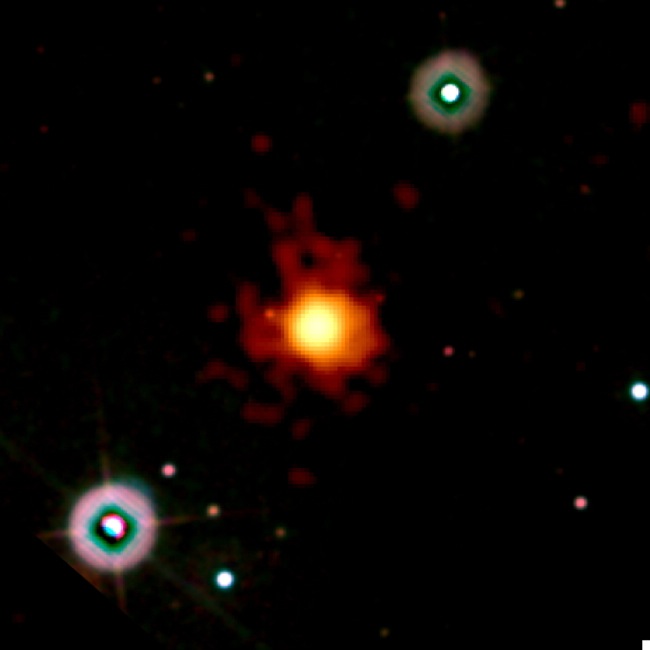
 Credit: NASA/Swift/Stefan Immler
Credit: NASA/Swift/Stefan Immler
Close to the Big Bang
The picture above shows the most distant object in the Universe. It's a false color image in orange of a bright X-ray afterglow produced by the death of a massive star that occurred more than 13 billion years ago, only about 600 million years after the Big Bang which formed the Universe. The burst was first detected by the Burst Alert Telescope on the Swift Observatory at 3:55 a.m. EDT on April 23. Swift automatically re-positioned itself to point its X-ray Telescope and UV and Optical Telescope at the burst, producing the above image of the X-ray afterglow and the optical light of the background stars. This pinpointed the position of the burst for followup observations by a slew of ground-based telescopes, like the Gemini North Telescope on Mauna Kea, the Galileo National Telescope on La Palma in the Canary Islands, and the European Southern Observatory's Very Large Telescopes on Cerro Paranal, Chile. These ground observations revealed the presence of a faint galaxy at the position of the burst. Further analysis showed that this galaxy had an astonishing redshift of 8.2, blowing away the previous record holder, a galaxy associated with a burst seen in September 2008, which had a redshift of 6.7. This shows that, surprisingly, the infant Universe was full of rather mature stars which exploded, producing complex chemicals and black holes.
Published: May 4, 2009
<
HEA Dictionary ● Archive
● Search HEAPOW
● Other Languages
● HEAPOW on Facebook
● Download all Images
● Education ● HEAD
>
Each week the HEASARC
brings you new, exciting and beautiful images from X-ray and Gamma ray
astronomy. Check back each week and be sure to check out the HEAPOW archive!
Page Author: Dr. Michael F. Corcoran
Last modified Tuesday, 27-Feb-2024 10:15:15 EST


